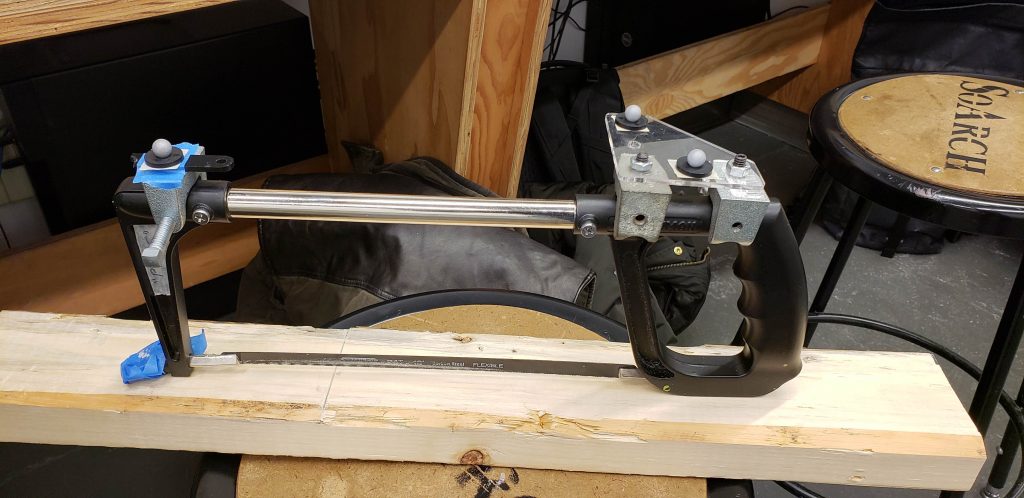In this exercise, the tool we chose was a Hacksaw which requires a human to push and pull the handle of the hacksaw while the blade scrapes against a wooden stud.
Our process is as follows:
- Place the markers on a visible area on the tool so that the MotionCapture Cameras can detect the markers.
- Collect 5 seconds of continuous data points
- Export data into Rhino/Grasshopper
- Synchronizing data to work space
- Map saw representation to the data

Looking at the final result, we can extrapolate the following:
- The push motion appears to require more force than the pull, which helps us realize that the cutting part of a hacksaw is a result of the pushing motion
- The hacksaw’s motion shakes horizontally, as it is difficult for humans to have precise streamlined motion
- The cutting motion likely results in more wood being removed from the ends/edges of the material because of the rocking motion
- The hacksaw appears to have never left the wood which suggests that it can also cut on the pulling motion

This also makes visible other aspects of the tool. While cutting a deeper channel into the material would stabilize the tool, initially, it’s left to human skill to keep the tool properly positioned. It does help that the blade of the tool has inherent flexibility, which can make the cutting process more forgiving, skill-wise, since you don’t need to keep the saw oriented parallel to the cuts all on your own. The lateral noise should still be a marker for skill, since a trained individual might be able to reduce that sway as extraneous movement, or at least cut much faster with the same amount.